Ghostwire: Tokyo Review: Odd in All the Right Ways
Ghostwire: Tokyo is an odd video game in all the right ways. While ostensibly an action-adventure title, there are plenty of role-playing game influences like leveling up and assigning skill points. It has all the hallmarks of an open-world video game with dozens of markers dotting the map, but due to the care and specificity of its setting, it never feels overwhelming or tedious. And there's an undercurrent of unhinged horror and the supernatural that pervades all of it. It would have been easy for all of those elements to combine into a sticky, digital slog of epic proportions, but instead, the final product makes for a pleasant – albeit imperfect – stroll through Tokyo… with an undercurrent of unhinged horror and the supernatural.
The story begins with Tokyo getting covered in a mysterious fog that basically turns all humans that come in contact with it into disembodied spirits. Akito manages to survive this thanks to the spirit of essentially a ghost hunter named KK inhabiting his body immediately prior to the fog overtaking his location. The two of them, basically dual protagonists with a slight skew towards Akito, then go about trying to take on the man behind it all, Hannya, while trying to find Akito's sister.
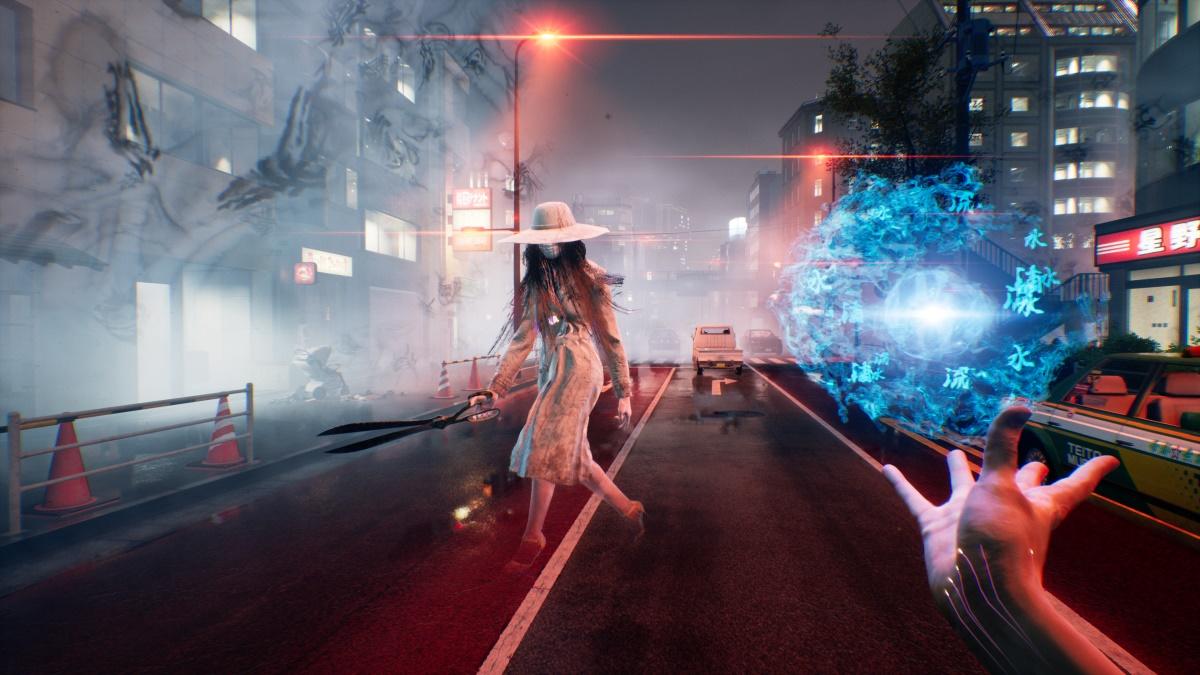
This is easier said than done, however, as the streets of Tokyo swarm with aggressive supernatural entities called Visitors gathering up those disembodied spirits and corrupted torii gates producing the aforementioned fog. Cleansing those gates and freeing the spirits means combating Visitors on the streets as well as in specific buildings and even on top of said buildings – there's a shocking amount of verticality in Ghostwire: Tokyo and you can even glide from building to building. These enemies range from pale, faceless businessmen with umbrellas to headless students to imposing, large women with giant scissors. While they are easy enough to deal with while sneaking around, they can swarm or corner you if given the opportunity.
Akito, thanks to KK, does have a few tools at his disposal, however, to take them on. While bound to Akito, KK grants the ability to use something called Ethereal Weaving, which is basically just elemental blasts – wind, fire, and water – that hit at different ranges and have different effects. Wind is the first and most common, and will speedily dispatch enemies, while fire can be shot in a line or charged up to produce a blast effect. Water, on the other hand, is more useful in situations where enemies are grouped together in front of the player as it shoots out in a set area.
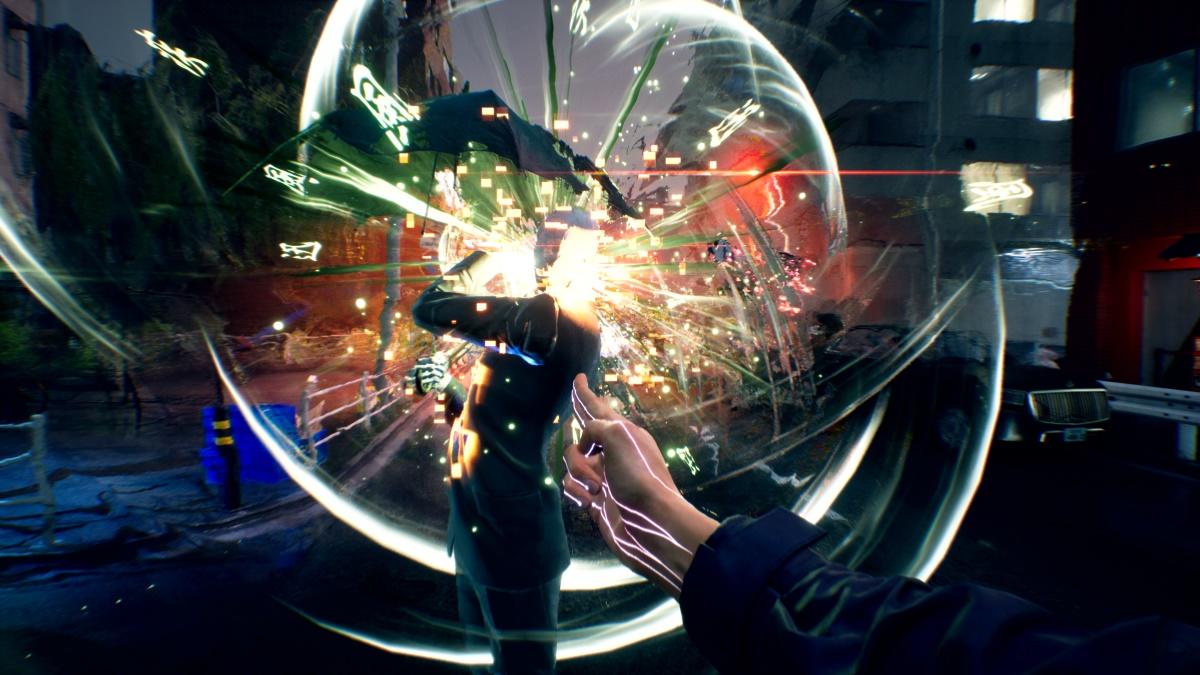
Over time, Akito unlocks other gear like a bow and talismans, but Ethereal Weaving is the bread and butter of combat. Pummeling an enemy with elemental blasts eventually exposes their core, which Akito can then grab to immediately destroy said enemy. This is important because defeating enemies will also return some ether, which is basically supernatural ammo. Ether is never in short supply around Tokyo as spooky objects can be destroyed to produce it, but the player can only carry so much at any given time.
Limited ammo also turns most combat encounters into a puzzle of sorts. As the game goes on, enemies become tougher, their cores more difficult to expose. Using one shot to hit multiple enemies, or charging up to heavily damage all at once, all the while shifting through whatever element makes the most sense at any given moment given the amount of space you have to play around with in the environment… it's a lot. And while Akito can move swiftly when he wants to and climb objects, traversal is overall a bit clunky, and more than once I found myself backed into a corner I didn't realize was there only to see a significant chunk of my health disappear for all my careful plotting.
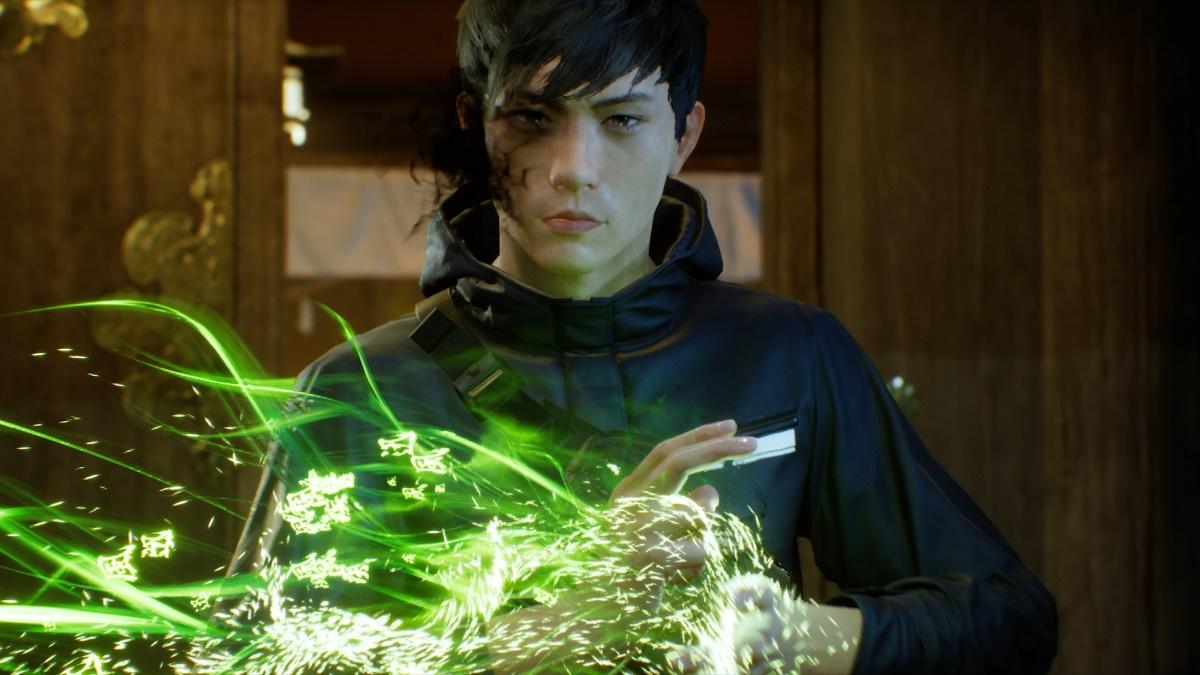
This also means that of all the various side missions and collectibles to seek out, Jizo Statues are perhaps the most important and biggest nuisances. These specifically increase the number of Ethereal Weaving shots that you can hold of its associated element. Even with the ability to detect nearby collectibles (as well as enemies, consumables like food that refill health, and nekomata merchants) thanks to KK's spirit vision, which highlights those within range for a brief time when activated, Jizo Statues are relatively small and infrequent. In other words, the most helpful secrets are also the biggest pain to find. Helpfully, secrets in the game do also have an audio cue in the form of a soft "meow" whenever they are nearby.
Speaking of gentle cues, Ghostwire: Tokyo is perhaps the best example of the possibility of the PlayStation 5's various bells and whistles, and especially the DualSense controller. Each action from the player includes some form of haptic feedback, but the developers didn't stop there. If it starts to rain outside, for example, holding the DualSense will make it feel like the light tapping of the droplets is hitting just outside a raincoat. Something as trivial as Akito drumming his fingers on top of a phone has haptic feedback attached to it for each time his finger hits it.
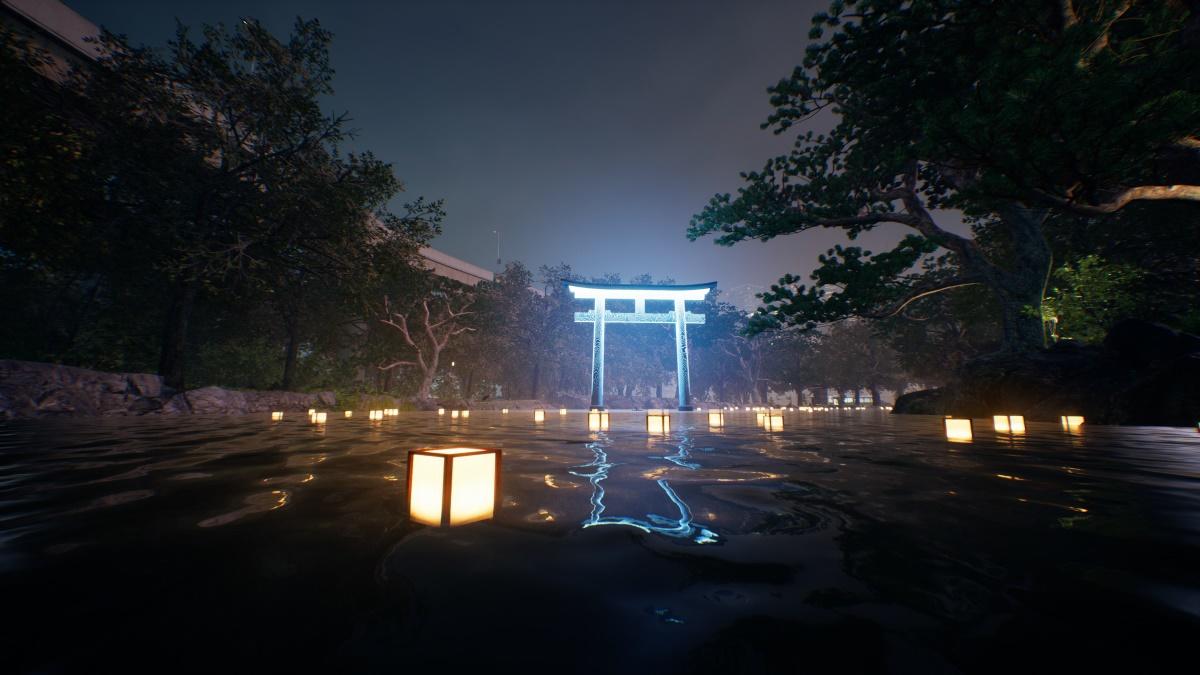
And it's not just the haptics of the DualSense controller as Ghostwire: Tokyo's sound design makes perfect use of the fact that it can produce audio too. For example, despite being inside Akito, KK can still communicate, but it is an otherworldly, detached sort of speaking that seemingly emanates from Akito's hand… and from the DualSense controller, so long as you're not playing with headphones.
It's the little touches like this that go a long way for me. The detailed descriptions of Japanese foods or relics buried in the Database tab have no reason to exist save for the fact that it paints a fuller picture of the place. Hand seals, which require the player to draw a specific pattern to do things like cleansing unruly specters, seem totally unnecessary but feel right. Gathering the sheer number of spirit clusters dotting Tokyo, which can apparently be mystically reformed into bodies by sending them through a phone line outside of the fog, are the easiest way to earn experience and money at the same time. And yes, you can pet the dogs, plural. There are dozens of small, deliberate design choices like this, which could feel convoluted or overwhelming but instead manage to come across as charming worldbuilding.
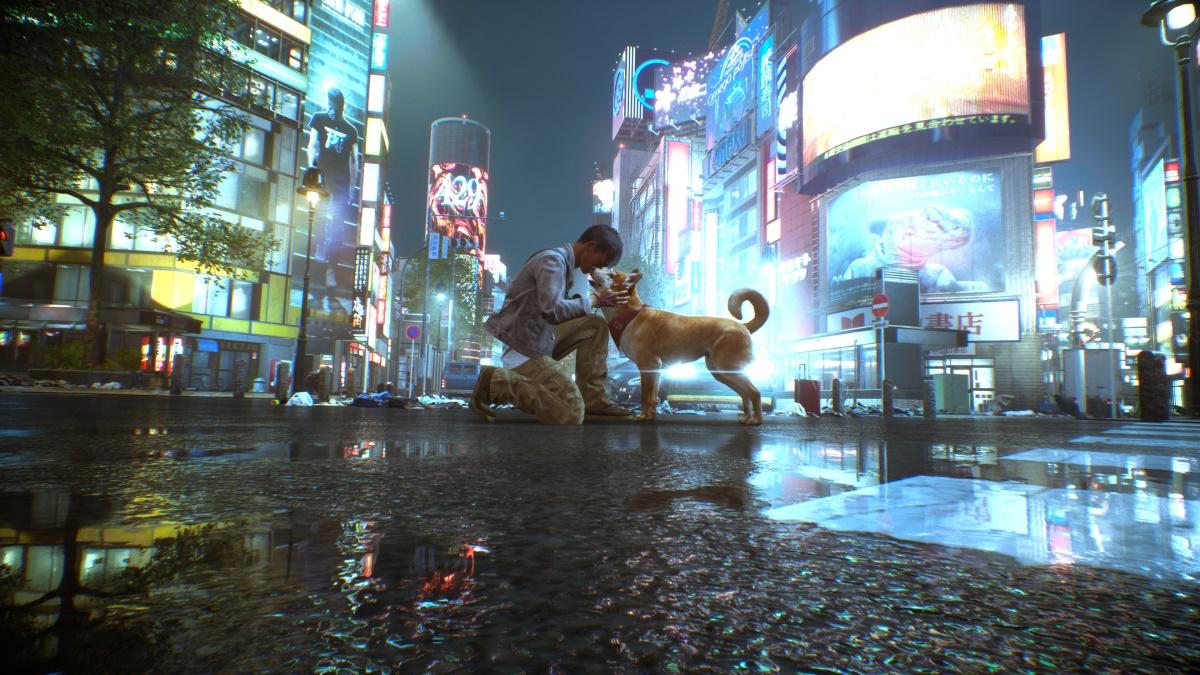
Ghostwire: Tokyo is by no means a perfect video game. Ultimately, I was less interested in the story than the city it takes place in. I never quite found myself with skill points left unused, but the benefit of using them didn't scale particularly well as somewhere after level 20 it became increasingly incremental at best. And while it took much longer than it has for me historically, the game's open-world nature did eventually wear on me and I found myself skipping more optional content than at the start. It is, however, a perfectly fine video game, and an excellent example of what the PlayStation 5 can do in the right hands.
Rating: 4 out of 5
Ghostwire: Tokyo is set to release for the PlayStation 5 and PC on March 25th, but anyone that preorders the PS5 Deluxe Edition via the PlayStation Store will be able to play on March 22nd. A PlayStation 5 review code was provided by the publisher for the purpose of this review, and it was reviewed on a PlayStation 5 with a disc drive.




